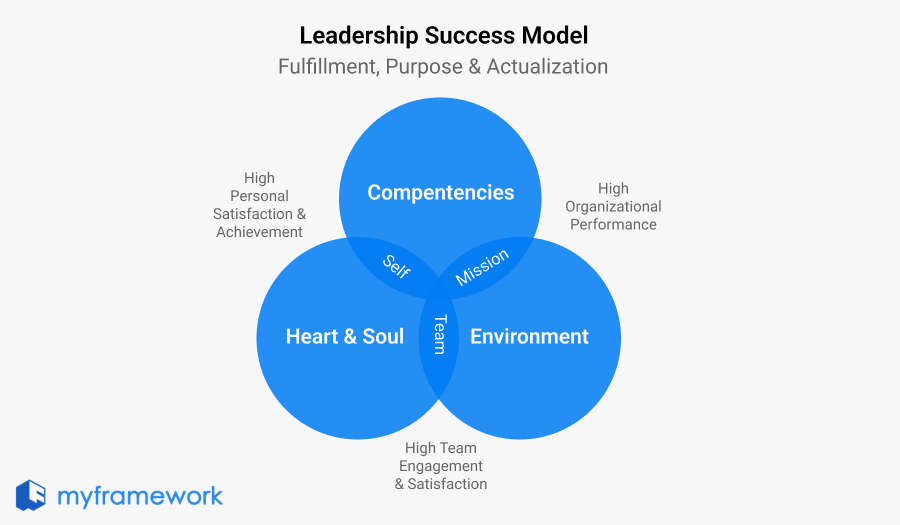Leaders today face a range of challenges that can hinder their success. Often, the path to effective leadership feels unclear.
Paul Byrne developed the Leadership Success Model to provide a simple yet powerful framework to guide leaders. This model highlights the balance of three core elements: Competencies, Heart & Soul, and Environment. These elements work together to support leaders in achieving success.
Core Concept of the Leadership Success Model
The model consists of three interconnected circles.

Competencies
The first circle refers to the skills and knowledge required to be an effective leader.
These include technical abilities, problem-solving skills, strategic thinking, and the ability to inspire and manage teams. Leaders must continuously improve their competencies to handle the demands of their roles.
Without strong competencies, a leader may struggle to gain respect and lead effectively.
Key capabilities:
- Creativity
- Innovation
- Risk & courage
- Decision making
- Conflict resolution
- Time management
- Resilience
- Communication
- Problem-solving
- Collaboration
- Adaptability
- Emotional intelligence

Become a member to read the full content
This framework is available to members only. Upgrade to unlock the content instantly.


